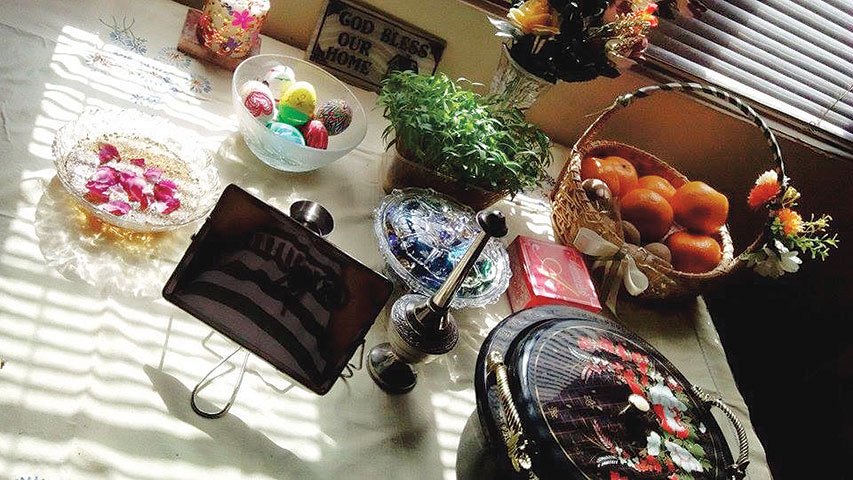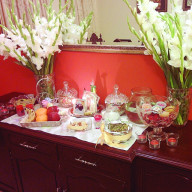

As part of the 13-day festivities, each family lays out the quintessential haft-seen or the seven ‘S’s table, comprising sabzeh (wheat sprouts that represent birth), sib (an apple for health and beauty), senjed (sweet dry-fruit representing love), seer (garlic for its medicinal qualities), serkeh (vinegar symbolic of age, patience and wisdom), somaq (berry powder representing sunrise and new beginnings) and sikka (a metal coin for prosperity), symbolising the bounties of spring and offer prayers for the following year to be as fruitful as the last.
While Navroze was originally celebrated by various communities across the Middle East, Central Asia and South Asia and linked to the faith of Zoroastrianism which originated in Persia, the cultural festival is now recognised worldwide as migrants from these regions continue to proudly uphold their traditional practices wherever they settle. In 2010, Navroze was proclaimed an official UN observance day because it promotes peace and solidarity among different peoples and communities. Therefore, here are some accounts of people around the world who observe Navroze and stay true to tradition in their own unique way.


On March 21 numerous communities around the world celebrate Navroze, including the Shiite Muslims settled in Pakistan. The annual celebration symbolises optimism and offers individuals an opportunity to experience physical and spiritual rejuvenation. In the community, therefore, the occasion is marked with utmost piety and devotion above everything else.
Read more here.


I remember celebrating Navroze since I was in Mama Parsi Girls’ Secondary School. All the Zarthosti children and teachers would put up the Navroze table on the eve of the New Year. Every girl would be assigned to bring a single item and then together we would help each other set it up on the table. I vividly recall the fragrance of fresh red roses in the room and a bowl of gold fish, a picture of Prophet Zoroaster and a copy of the Khordeh Avesta (Holy book) placed on the table.
Read more here.


Being a Parsi Zoroastrian — a group of Zoroastrians from Greater Iran who migrated to the western borders of South Asia during the seventh century AD — in India I’ve heard many friends tell me, “Lucky you, you get to celebrate two New Years!” My reaction to this is to nod, smile and say, “You know us Parsis, we never pass up an excuse to party!”
Read more here.


Coming from a Zoroastrian family back in Karachi, Pakistan, I remember Navroze being a grand celebration. To mark the advent of spring with a 13-day festival, each family would lay out a traditional haft-seen table, chalks out an elaborate rangoli outside their front entrance and exchange sweetmeats with their neighbours and relatives. As a family tradition, my cousins and I would even exchange painted eggs upon visiting each other’s homes, hoping to bag the coveted ‘best design’ title for the year. But having recently shifted to Perth, Australia, to pursue a post-grad degree, Navroze will be slightly different for me this year.
Read more here.


‘Mader’ means ‘mother’ in Farsi, and that’s what we affectionately called my paternal grandmother, Shameem Saadat. My father tells me that Mader’s grandfather, Syed Nadir Ali Shah, was a Sufi saint who travelled from his home in Iran to present-day Pakistan, to spread the Sufi word. He fell in love with a hazel-eyed girl, married her, and ended up spending the rest of his life in Lahore. That hazel-eyed girl was Mader’s grandmother.
Read more here.




































1714129906-0/Clint-Eastwood-(1)1714129906-0-270x192.webp)






COMMENTS (3)
Comments are moderated and generally will be posted if they are on-topic and not abusive.
For more information, please see our Comments FAQ